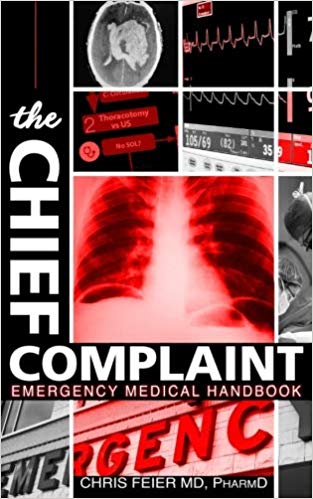The Chief Complaint (2014) is a 220-page handbook which outlines the differential diagnoses and management of most of the important chief complaints and conditions one might encounter in an emergency medicine setting.
Take chest pain as an example. The differential diagnosis provided includes, acute coronary syndrome, aortic dissection, pulmonary embolism, pneumothorax, effort rupture of the esophagus (Boerhaave syndrome) and acute pericarditis. Very fair. Along with the differential diagnosis, the author provides bulleted brief discussions of differentiating elements of the clinical history, physical examination, work-up and management.

As an emergency medicine book, the layout is mostly temporal (that is, time-based). So for example, the approach to seizure (page 113) starts with rapid assessment and treatment (airway, breathing, circulation, etc.), along with attention to immediately reversible causes. This is very reasonable for a seizure emergency, particularly status epilepticus: don’t waste your time thinking through an amazing differential while the patient in front of you isn’t breathing! Unfortunately, though, the work-up itself is somewhat disorganized and deficient. Hypoglycemia is mentioned in Step 1 under Rapidly Reversible Cause, while, for unclear reasons, hyponatremia is mentioned further down in Step 3 under Refractory Seizure. In addition, brain imaging (mass lesion), blood pressure lowering (hypertensive emergency), electrocardiography (for suspected tricyclic antidepressant overdose or seizure mimics), and temperature lowering/sepsis treatment (meningitis!) aren’t mentioned at all under seizures. Perhaps these points will be addressed in a future edition of the book.
For these reasons, I recommend The Chief Complaint (2014) to anyone interested in emergency medicine, particularly medical students and junior residents who want to contribute to high acuity patient care, under supervision, without losing their bearings. You can download it for free onto your mobile device. More about that here.
Participation questions:
- What do you think of this book?
- What is your favorite emergency medicine learning tool and why?


Leave a Reply